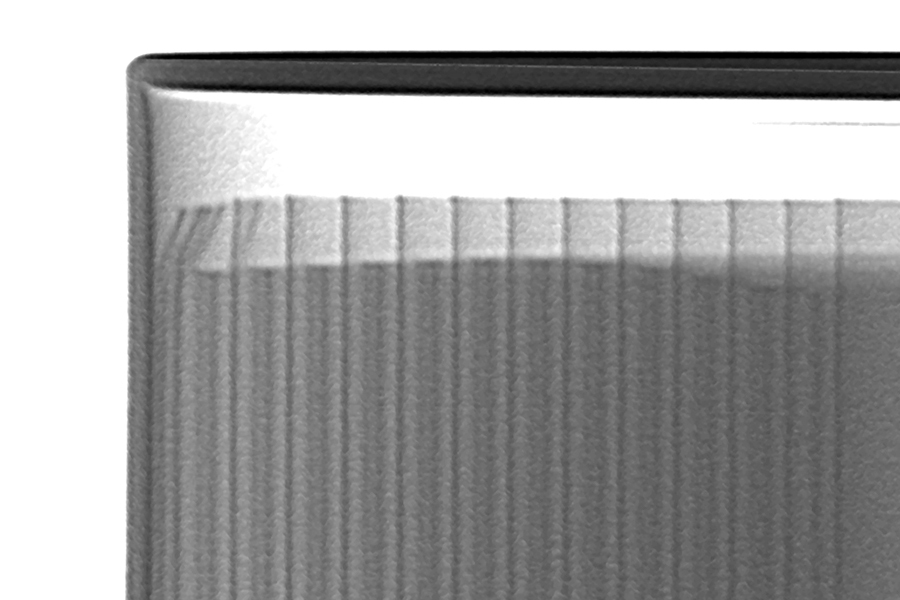 |
An image taken by Innometry’s X-ray machine shows the inside of a battery. The top left part of the image shows that the components are slightly bent. (Innometry) |
Electric vehicles are powered by hundreds, even thousands of battery cells. If just one defective cell catches fire, a massive recall will not only cost billions of dollars but also the trust of customers.
So how do battery manufacturers sort out the bad apples?
“For automakers, the safety of EVs are their key competitiveness, so they require stringent safety standards from their battery suppliers,” said Zin Hwang, chief financial officer at Innometry, a South Korean firm that specializes in X-ray inspections for EV batteries.
“The batteries are produced at such high speed at assembly lines, and their sizes, shapes and types are all different. The know-how is to shoot X-rays precisely at the right angle at the right timing at the right part of the batteries. This isn’t as easy as it sounds.”
Demand for Innometry’s X-ray inspection solution surfaced in 2016 when Samsung Electronics’ Galaxy Note 7 smartphones suffered multiple cases of exploding batteries. The incident opened up a new market for the X-ray inspection service for small-sized battery cells inside IT gadgets.
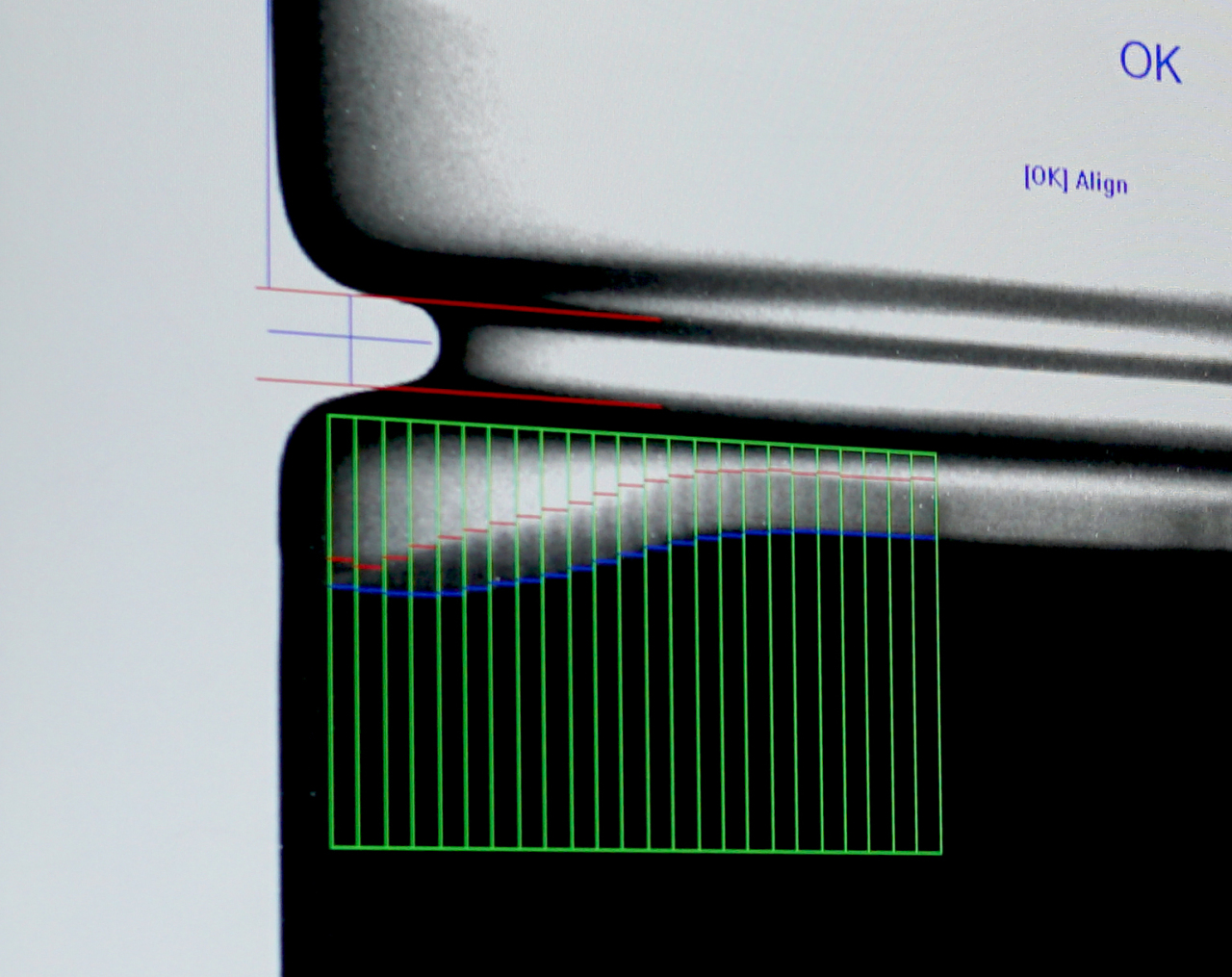 |
Innometry’s X-ray analysis shows misalignment inside a battery. (Innometry) |
Now, thanks to the global EV boom, the X-ray equipment is selling fast for the mid and large-sized battery cells that power EVs.
Innometry does not disclose its client list, but Eugene Investment & Securities said its X-rays machines are installed at the assembly lines of LG Energy Solution, Samsung SDI, SK Innovation, BYD, Northvolt, among others.
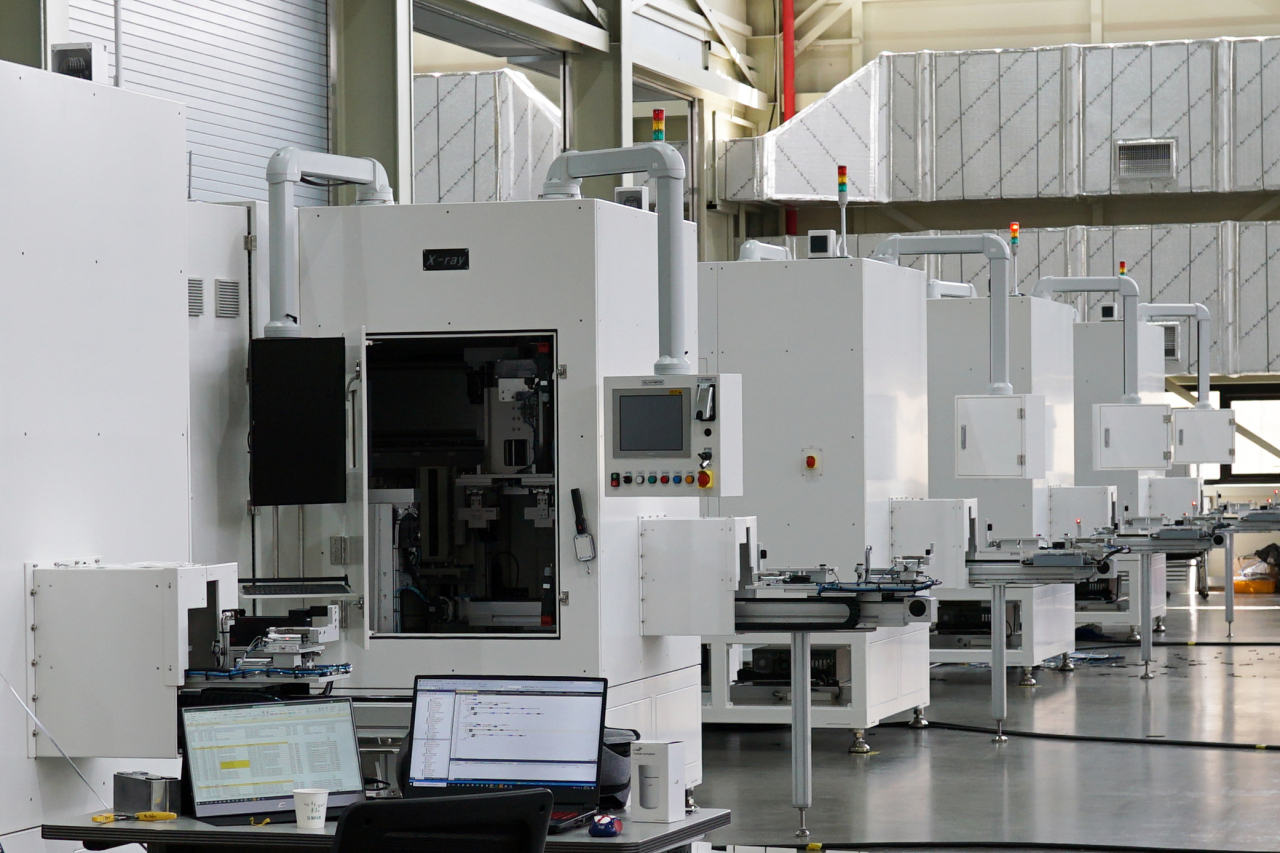 |
An image taken by Innometry’s X-ray machine shows the inside of a battery. The top left part of the image shows that the components are slightly bent. (Innometry) |
“The X-ray machines take shots of hundreds of battery cells per minute and detect any impurities that shouldn’t be inside. Then, the software, trained by deep learning technologies, pinpoints the location of the defective cells and gives orders to robot arms to physically sort them out from the assembly lines without halting the production,” said Kim Young-ju, team leader at Innometry.
Inside batteries, a thin film of three different layers -- cathode, separator and anode -- is rolled like a toilet paper or stacked vertically like a sandwich. Innometry’s software checks in real-time whether all the layers are assembled properly or if any is missing.
So, X-ray machines can filter out bad apples, but what could be done to prevent bad apples from growing in the first place?
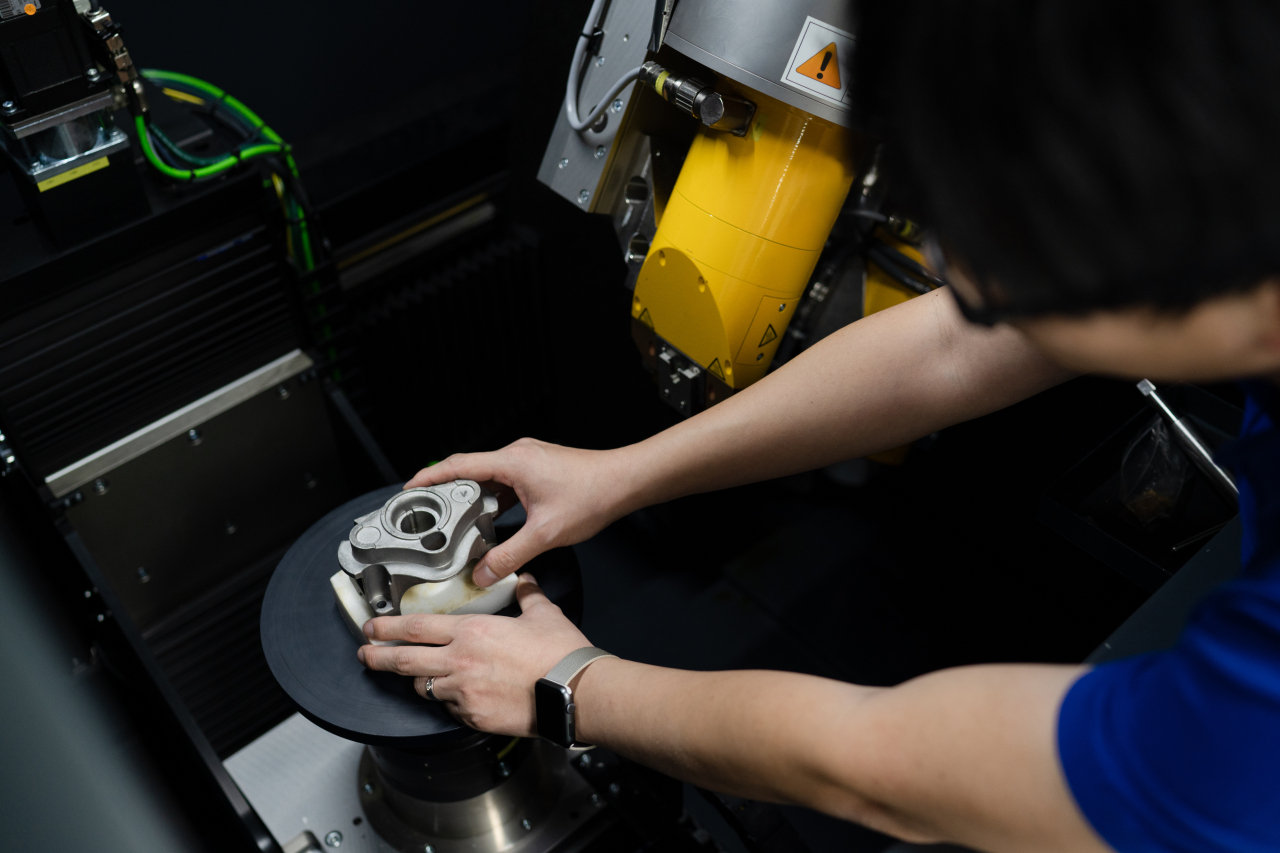 |
Baker Hughes Korea’s CT scanner (Baker Hughes) |
“Clients come here because they want to see what they can’t see,” said Lee Seung-chul, radiography product sales leader at Baker Hughes Korea, as he gave a tour of the firm’s analysis lab in Panggyo, Gyeonggi Province, equipped with CT scanners the size of golf carts.
“Let’s say there is a sandwich. X-ray machines offer a single flat 2D image that penetrates all the ingredients. CT scanners, on the other hand, provide 3D images of all the ingredients inside such as ham, lettuce and egg.”
Baker Hughes’ CT scanners put an object on a slowly rotating plate and shoot narrow X-ray beams to capture 1,500 to 3,000 cross-section images and build a 3D reconstruction of the object. The process takes 3 minutes to 2 hours and costs hundreds of dollars per 30 minutes.
According to Lee, Baker Hughes’ CT scanners allow battery manufacturers to find out why battery cells are defective and make adjustments on their assembly lines thereon.
CT scanners are nothing new and battery manufacturers have their own equipment for research and development. When they change the chemistries of their batteries or conduct stress tests on new ones, for instance, they use CT scanners to monitor changes before and after. Also, they use CT scanners to find the cause of a defective battery.
As to why battery firms need Baker Hughes’ help, Lee said that though CT scanners in the market have almost the same specifications, Baker Hughes can find what others can’t as the company manufactures CT scanners 100 percent on its own and therefore has better understating and control of the machines. Also, the company utilizes a specialized software that makes corrections if an object slightly moves during scanning, bringing up the level of precision.
“When battery makers see CT scans of the inside of their batteries, they are like hospital patients who get surprised and say, ‘My body looks like this?’” Lee said.
“When clients look at the CT images, they stop at random points and say, ‘Oh this is what we’re looking for. Can you send a copy of this?’ and then they leave. We don’t know exactly what they saw in the images but I’m sure it was helpful.”
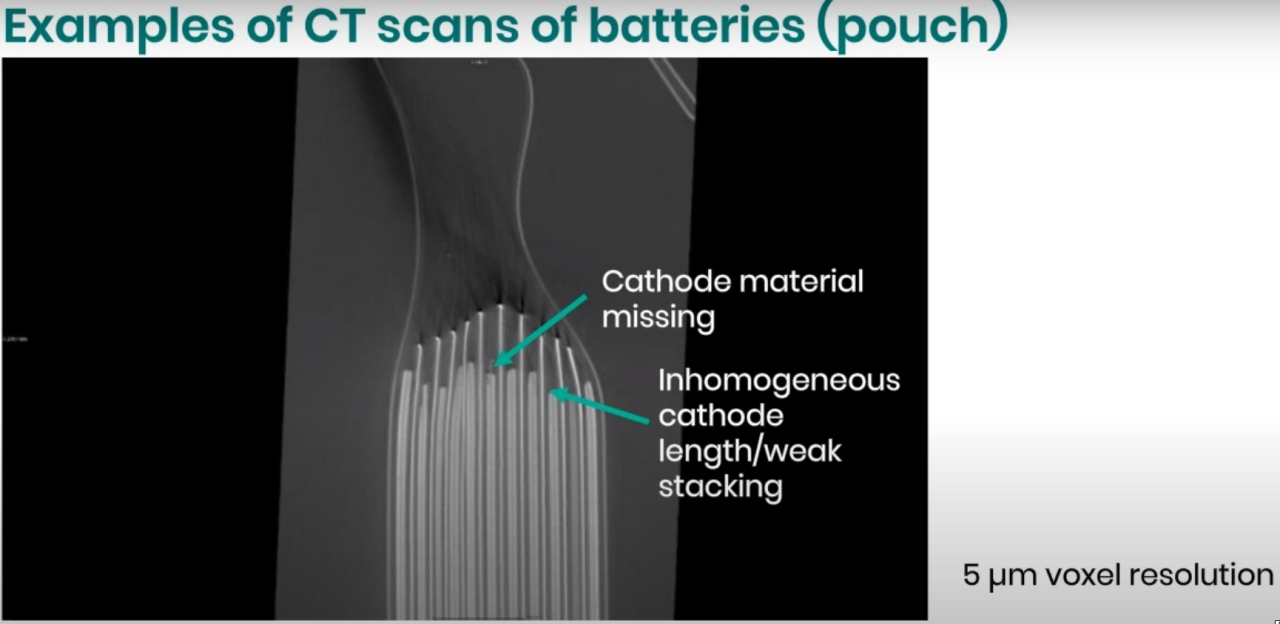 |
(Baker Hughes Korea) |
Baker Hughes’ CT analysis for batteries ranges from classical regular anode and cathode overhang inspection for pouch and prismatic cells to new spot checks for items such as, foreign body material, gas bubbles, welding defects of electrodes, electrode cracks, and electrolyte filling. For energy storage systems and EV modules, the firm inspects for resin filling, connections, cell alignment or dimensional accuracy.
In addition, its has recently developed automatic defect recognition software, a digital inspection solution for non-destructive tests that helps support the pass fail test during an inline CT inspection.
Baker Hughes Korea’s clients include Korea’s top three battery manufacturers. Baker Hughes’ non-destructive testing business, formerly owned by General Electric, has more than 125 years of experience in the field, its legacy brands including Krautkramer, phoenix|x-ray, Seifert, Everest and Agfa NDT technologies.
By Kim Byung-wook (
kbw@heraldcorp.com)












